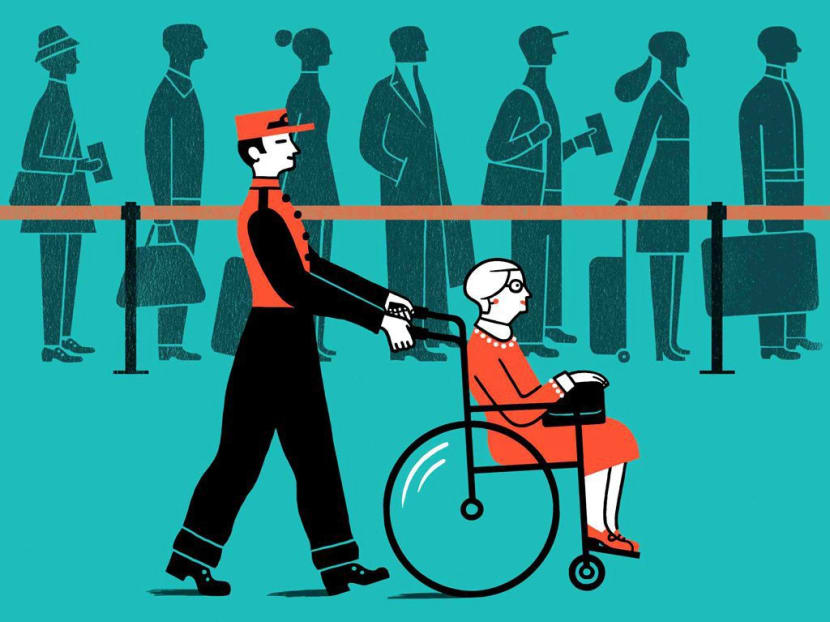Six simple tips for smooth travel with a disability
NEW YORK — Times have changed for travelers who use wheelchairs, are visually or hearing-impaired or have another disability, said Ms Jayne Bliss, a travel adviser with Tzell, who has more than 30 years of experience in planning trips for those with special needs.

Times have changed for travelers who use wheelchairs, are visually or hearing-impaired or have another disability.
NEW YORK — Times have changed for travelers who use wheelchairs, are visually or hearing-impaired or have another disability, said Ms Jayne Bliss, a travel adviser with Tzell, who has more than 30 years of experience in planning trips for those with special needs.
Following are some of her tips.
- Seek Help: Asking your airline for assistance, either at the time of booking or a few days before your trip, will make your time at the airport much easier. Many airlines will designate an employee to meet you curbside when you arrive or at check-in with a wheelchair (if you need one) and guide you through security. You can also request assistance when you land at your destination.
- Plan Ahead: Most hotels in all price ranges welcome travelers with disabilities, Ms Bliss said. However, it’s crucial to give them a heads up about what your needs are if there’s anything specific.
- Work with an Agent: Someone who specialises in working with disabled travelers can arrange every aspect of your trip including booking your airline tickets, tours and restaurants. They can make sure to get the measurements you need, verify the hotels, resorts, or restaurants you’re interested in are accessible, and provide other services to make sure you have a smooth trip and a comfortable stay.
- Find a Guide: Ms Bliss said that there are guides all over the world who have experience in working with travelers with disabilities. “These guides can make your time in the destination hassle-free because they know the sights you can and can’t access, the restaurants where you’ll have an enjoyable experience and more,” she said.
Some guides can even arrange for wheelchairs, scooters and canes or know sign language to communicate with those who are hearing-impaired. Others simply remember to take visible and invisible disabilities into account when planning activities or organising groups, so you’re not stuck joining a tour group where you can’t participate in half of the activities. You can find guides through some of the previously mentioned agencies, a web search, your travel agent, your hotel’s concierge or on TripAdvisor.
- Consider a Tour: Several travel operators offer both private and group trips for those with disabilities. “These preset itineraries take into account exactly what your needs are so you don’t have to arrange anything yourself,” Ms Bliss said. One example is Flying Wheels Travel, which has several itineraries a year to destinations such as Peru, Japan and Portugal.
- Visit Accessible Sites: Many museums around the globe take care to accommodate visitors with disabilities in a number of different ways. The Guggenheim in New York, for example, has monthly tours for the visually impaired. These tours are free but must be reserved in advance. Find out what services a museum offers by calling its visitor information line, or visiting its website before you plan your visit. THE NEW YORK TIMES






